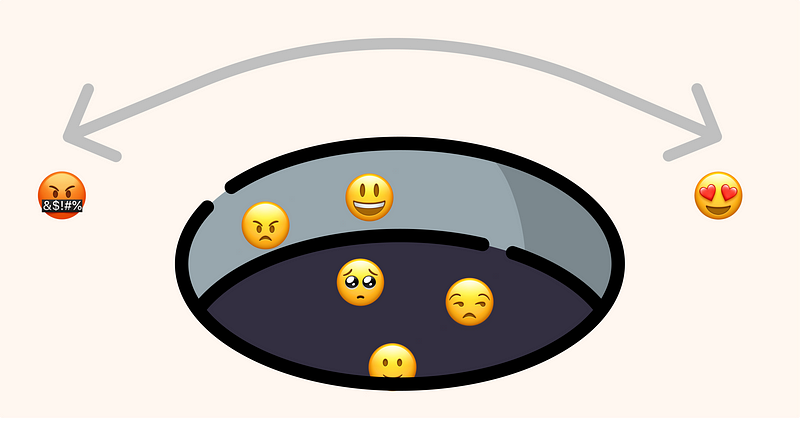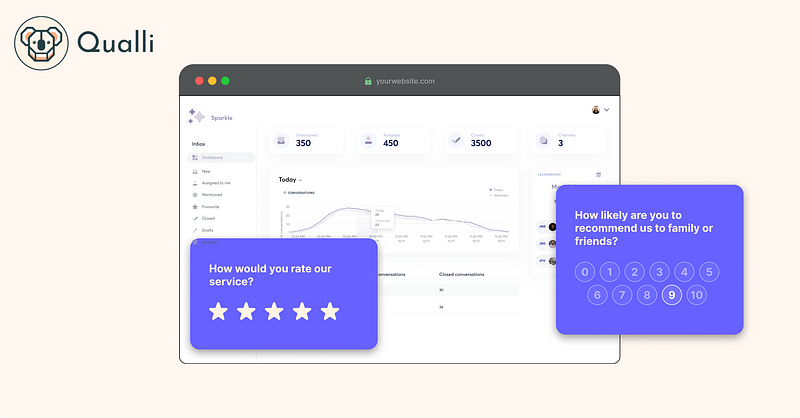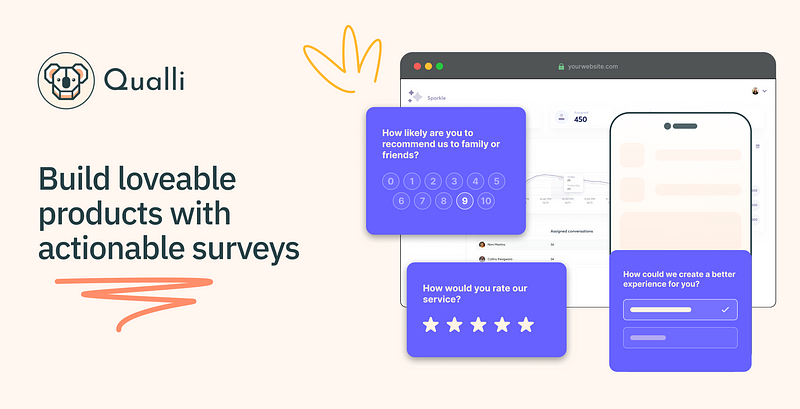Not listening to your users is a business killer; you spend your time and resources on something that users don’t end up needing. Although this seems very logical, how much feedback have you ever given in an app? It’s very rare, and especially in smaller companies.
Many companies use Typeform, or set up complex marketing funnels to reach their users. Your user’s inbox is already hot property, you’re raising your hand at a rock concert, trying to get seen…
We expect users to go through this flow when we ask for feedback

User gets an email with a subject line “please give us feedback” …
User has to click it and read the promotional pitch inside
Then decide if they want to spent the time on it
If so -> open up the Form (ugh opens the browser, an extra tab to delete)
Fill out the whole thing, trying to remember what they experienced during the usage of your product (which causes bias results)
So ask yourself the question, how often do you fill in one of these?
The main problems of the current, typical feedback flow
1. These are some of the biggest pain points anyone doing user research might experience.

There are 5 main types of response bias. But the most challenging in this case is “Recall Bias: The Challenge of Memory”.
Recall bias arises when respondents have difficulty accurately recalling past events or experiences. This can lead to responses that are not truly reflective of what occurred.
Its like having to sum up what you have eaten last week, and which parts you liked or didn’t like. That’s pretty hard ….
2. Your only targeting extremes

You’re asking your user to go through the entire flow described above + fill out a survey with multiple steps. What kind of person would be willing to do that? The very satisfied one, or the very disappointed one.
Extreme emotions towards a product lead to higher completion rates, which also causes extreme bias in your result.
You’re getting both end of the spectrum, but not the entire grey area in between.
3. Crowded inbox

This one speaks for itself. A typical inbox is flooded with emails: promotional, subscriptions, newsletters, commercial, …..
This quote I love, and will pop up a couple of times: you’re raising your hand at a rock concert, trying to get seen
4. Automation is expensive and difficult
If you want to set up a automated feedback system, how would you do it? Would you need to get an engineer involved? Multiple stakeholders?
The answer is probably yes.
Micro-feedback, what is it? How can it help?
Ever stumbled upon a brief survey right when you’re using a feature in an app, and thought, “Hey, that’s a smart way to ask!”? That’s micro-feedback in action. It’s all about capturing users’ thoughts and feelings at the very moment they’re engaging with your product. But let’s dive deeper into what makes micro-feedback not just smart, but incredibly effective.

Understanding Micro-Feedback
Micro-feedback is the practice of soliciting brief, targeted responses from users during their interaction with a digital product. Unlike traditional, lengthy surveys, these are concise, context-specific, and timed to capture the essence of the user’s immediate experience.
The Benefits of Micro-Feedback
Real-Time Insights: By asking for feedback right when users are engaging with a feature, you get their raw, unfiltered reactions. This timeliness ensures the feedback is relevant and reflective of their true experience.
Higher Response Rates: Let’s face it, long surveys can be a drag. Micro-feedback, with its quick and easy nature, encourages more users to participate, boosting your response rates.
Contextual Relevance: Micro-feedback is directly linked to what the user is experiencing at that moment. This context-rich information is invaluable for understanding specific aspects of your product and how they’re being received.
Non-Intrusive Experience: Because it’s woven into the user journey, micro-feedback feels less like an interruption and more like a natural part of the app experience. This seamless approach enhances user satisfaction and ensures more genuine responses.
In essence, micro-feedback is about tapping into those critical moments of user interaction to gather meaningful insights.
Advantages of On-Page Surveys and Implementing Them for Micro Learnings
On-page surveys are an incredibly powerful tool for capturing user feedback in real-time. When used effectively, they can be a key driver in setting up and collecting micro learnings within your digital product.
Benefits of On-Page Surveys
Enhanced User Engagement: On-page surveys are interactive and engaging, encouraging users to participate actively. This heightened engagement is crucial for gaining genuine insights.
Real-Time Feedback: These surveys capture immediate reactions and thoughts, providing a snapshot of the user experience as it happens. This timeliness is invaluable for understanding and responding to user needs quickly.
Specificity and Relevance: You can tailor on-page surveys to specific features or user actions, making them highly relevant. This specificity helps in gathering detailed feedback on particular aspects of your product.
Real-World Examples
Consider a language learning app that introduces a new vocabulary feature. An on-page survey could pop up right after a user tries the feature, asking specific questions about their experience — was it easy to use, did they find it helpful, etc. The immediate feedback helps the app creators understand how well the feature is being received and what improvements are needed.
Another example could be an e-commerce app using on-page surveys to understand user experience during the checkout process. By asking targeted questions right after checkout, the app can gather insights on how to streamline the process further.
In summary, on-page surveys are a dynamic tool for setting up and enhancing micro learnings. They provide real-time, relevant feedback directly from your users, enabling you to make data-driven decisions and continually refine your product for a better user experience.
What tools to use?
Choosing the right platform for on-page surveys is key, and Qualli could be an option to consider.

At a glance
User-Friendly: Easy setup means you spend less time fiddling with tools and more time gathering insights.
Fully Customisable: Tailor surveys to match your brand, making them a natural part of your app experience.
Smart Triggers: Set surveys to appear based on specific user actions, ensuring relevant and timely feedback.
Instant Analytics: Get real-time feedback analysis to quickly adapt and improve your product.
Responsive and Adaptive: Works seamlessly across all devices, ensuring a smooth user experience.
For more information on feedback tools, read these blog articles "Best Marketing Tools in 2023" & "In App Survey Tools: a guide"
Why Qualli for Micro Learnings?
Qualli makes it effortless to integrate micro-feedback into your app. Gather instant, relevant feedback at critical touchpoints, and use these insights for rapid, informed enhancements. It’s not just about collecting data; it’s about creating a conversation with your users and making them feel heard. With
Qualli, you’re not just building a better product; you’re nurturing better user relationships.
Anything we missed? Let me know!







